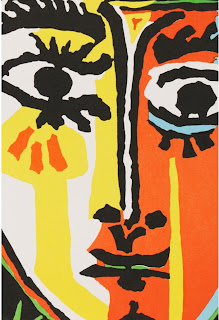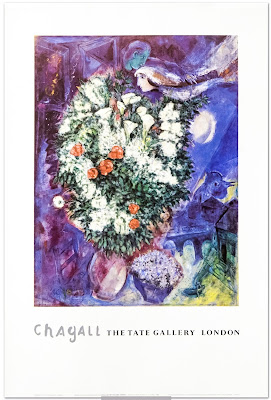Original "Picasso" Exhibition Poster 1962 "Buste De Femme Au Chapeau"
Original "Picasso" Exhibition Poster 1962 "Buste De Femme Au Chapeau"
 Picasso had left Paris with Jacqueline Roque in 1958, dividing his time between Villa La Californie at Cannes and his newly acquired property Château de Vauvenargues near Aix-en-Provence. A major practical drawback of this move was the delayed communications with the printing studios in Paris. There plates could be proofed and returned within a matter of hours; now it took days.
Picasso had left Paris with Jacqueline Roque in 1958, dividing his time between Villa La Californie at Cannes and his newly acquired property Château de Vauvenargues near Aix-en-Provence. A major practical drawback of this move was the delayed communications with the printing studios in Paris. There plates could be proofed and returned within a matter of hours; now it took days.
Picasso and the Linocut
Linocuts form a relatively small part of Picasso’s oeuvre as a printmaker, however some of his most outstanding compositions were produced using this method in a short burst of activity between 1958 and 1963. It was a combination of geographic necessity and artistic curiosity which led the artist, at the age of 78, to turn away from etching and lithography – hitherto his favourite means of graphic expression – and take up the linocut technique.
 Picasso had left Paris with Jacqueline Roque in 1958, dividing his time between Villa La Californie at Cannes and his newly acquired property Château de Vauvenargues near Aix-en-Provence. A major practical drawback of this move was the delayed communications with the printing studios in Paris. There plates could be proofed and returned within a matter of hours; now it took days.
Picasso had left Paris with Jacqueline Roque in 1958, dividing his time between Villa La Californie at Cannes and his newly acquired property Château de Vauvenargues near Aix-en-Provence. A major practical drawback of this move was the delayed communications with the printing studios in Paris. There plates could be proofed and returned within a matter of hours; now it took days.
Picasso’s first involvement with linocut printing had been rather casual. In 1952 he had produced a series of simple posters for the potters of Vallauris, a village in the hills above Cannes. Six years later he engaged with the technique more intensively when, working with the young printer Hidalgo Arnéra, he re-imagined Lucas Cranach the Elder’s sober Portrait of a Young Girl. The resulting print is astonishing, but Picasso found the process too labour-intensive and complicated, as it required the cutting and registering of six different colour blocks to be printed precisely one on top of the other.
When Picasso returned to linocut printing a few years later he had come up with an extraordinary solution to this technical problem: rather than use separate blocks for each colour, he printed the whole image from just one block in the so-called ‘reduction’ method. The block was printed in the lightest colour, then cut further and printed successively from the lighter to the darker colours. While making the task of registration much simpler, it required a tremendous power of imagination to foresee how each change in the block would impact on the composition as a whole. It was precisely the kind of artistic experiment which Picasso enjoyed and he embraced the challenge wholeheartedly and playfully. His masterpiece of this period, Buste de Femme aux Chapeau, is one of his greatest portraits of Jacqueline and a prime example of this technical tour de force – a creative liberation which resulted in some of the most luminous and joyful images in Picasso’s entire oeuvre.
Main Image:
Lot 102
PABLO PICASSO (1881–1973)
Nature morte au Verre sous la Lampe
linocut in colours, 1962
Lot 102
PABLO PICASSO (1881–1973)
Nature morte au Verre sous la Lampe
linocut in colours, 1962





Comments
Post a Comment